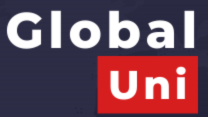In the short-term, India is predicted to increase its current 29% share to represent one third of international students in the US by 2030, with China shrinking to 23% and the rest of the world accounting for 43%, according to data presented by HolonIQ co-CEO Patrick Brothers at PLNA conference 2024.
“If you thought the last 10-20 years were tough serving the volume of students around the world, you haven’t seen anything yet,” said Brothers.
According to HolonIQ predictions, there will be an additional two billion worldwide postsecondary students by 2050, and 970 million more students achieving postgraduate credentials in that period.
This influx of students will be fuelled by today’s global population of 10–14-year-olds that currently totals 500 million, 120 million of whom are in India and 85 million in China.
The current dominance of India was not lost on delegates in Boston, learning that Indian students make up one third of the world’s STEM graduates, with 89% of Indian postgraduate and undergraduate students in the US graduating in STEM fields.
“This is important when we think about future workforce planning and OPT, as well as the demands that these countries have in their own workforces and why they are seeking to up skill here in the US,” said Brothers.
If you thought the last 10-20 years were tough serving the volume of students around the world, you haven’t seen anything yet
Patrick Brothers HolonIQ
Beyond 2050, Brothers emphasised the growing importance of Africa where youth populations in Niger, Uganda, Nigeria, Tanzania and the Congo are growing especially quickly.
In contrast, China, India and many other large eastern markets are expecting a decline in the 10–14-year-old population over the next decade.
“By 2050 we will see more growth, from eight billion to over nine billion, but Asia will plateau and will move into decline and Africa will be booming.”
According to the UN, by 2100, one in three people on earth will live in Africa, demanding that global institutions adapt their offerings to meet the needs of this emerging market.
“A really fascinating perspective that not everyone is switched on to are the dramatically different price points of programs for students from those source countries,” said Brothers.

In 2022, Nigerian students paid on average $15K per year for postgraduate programs in the US, compared to Chinese students who paid an average of $48K.
“As institutions switch from a dominant China to an emerging Africa, you have to dramatically change your entire program portfolio, not just change the price of the individual programs,” Brothers told PLNA delegates.
He explained that the price disparities are driven by African students choosing different programs that cost less in comparison to courses traditionally chosen by students from China.
Throughout the conference, delegates heard that the unaffordability of a US education is speeding up the transition to non-traditional models of education, driving more online programs, TNE and global institutional partnerships.
Brothers also emphasised the importance of future global workforce planning and the growing demand for career credentials.
“When you hear the rhetoric that 50% of jobs will disappear, the historic data doesn’t support that statement, but the skills in those jobs are changing and the skills are very different,” said Brothers.
Amid rapid technological changes and the growing green economy, universities are acting too slowly to upskill billions of people around the world, said Brothers, and employers are increasingly favouring micro and non-degree credentials to prepare students for the workforce.
“We’re really starting to see changes in relations that have held constant over a long period of time. The bachelor’s degree wage premium, according to the stats, is on the decline.”
“Those who earn a certificate or other non-degree certification are achieving a higher personal income,” said Brothers.
The bachelor’s degree wage premium is on the decline
Patrick Brothers, HolonIQ
According to HolonIQ estimates in the early 2020s, over 100 million learners were collectively spending more than $10 billion per year on micro or alternative credentials, ranging from online and offline bootcamps to online non-degree certificates and postsecondary micro credentials mainly issued by universities.
Ageing populations in countries across the globe are further disrupting traditional models of education, fuelling the development of lifelong learning and driving the increased demand for health services jobs around the world.
Since 1973, demand for private education and health services has increased by nearly five times and the most of any industry, taking up the second largest labour market share in the US behind trade, transportation and utilities.




